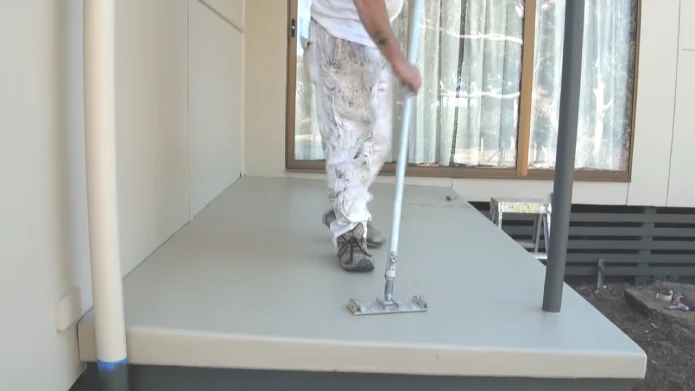Concrete is a popular and durable building material used in construction for centuries. It is commonly used for floors, walls, driveways, patios, and other outdoor surfaces due to its strength and durability. But concrete can also be susceptible to damage from weathering and exposure to chemicals or liquids.
One way to protect painted concrete surfaces from these potential sources of damage is by sealing them. The sealing process involves applying a protective layer over the paint’s surface to prevent it from contacting external elements such as water, oils, dirt, and UV rays.
Sealing painted concrete not only enhances its appearance but also prolongs its lifespan by preventing moisture penetration which can cause cracking or peeling of the paint coating. Let’s discuss why sealing painted concrete is incredible and all the different types of sealers out there.
Why Sealing Painted Concrete is Beneficial?
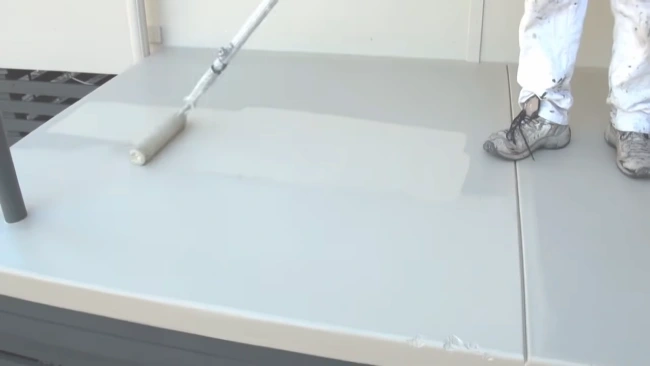
Sealing painted concrete is an effective way to protect the surface from damage and wear. This process involves applying a protective layer on top of the paint to prevent moisture, stains, and other forms of damage. Sealing offers many benefits that can extend the life of your painted concrete surfaces.
Enhance Durability: One of the primary advantages of sealing painted concrete is its ability to enhance durability. The sealant creates a barrier between the paint and external elements like water or chemicals, preventing them from penetrating into the material.
As a result, your painted concrete will be more resistant to scratches, chipping, fading, and cracking over time.
Aesthetic Appeal: Another benefit of sealing painted concrete is its aesthetic appeal. A sealer provides a glossy finish that can make your surfaces look brand new while accentuating their color vibrancy.
Keep Dirt and Dust off: It also helps keep dirt and dust off your floors as they cannot penetrate the sealed surface. This makes cleaning up any spills or accidents easier without leaving behind stubborn stains or marks.
What Are the Different Types Of Concrete Sealers?
Various types of sealers available for painted concrete provide different levels of protection and finishes. Acrylic sealers are popular because they offer good UV resistance and provide a glossy finish that enhances the color of the paint.
Epoxy sealers have excellent adhesion properties but may be yellow when exposed to sunlight over time. Polyurethane sealers are durable and scratch-resistant, making them ideal for high-traffic areas.
How Do You Seal Painted Concrete?
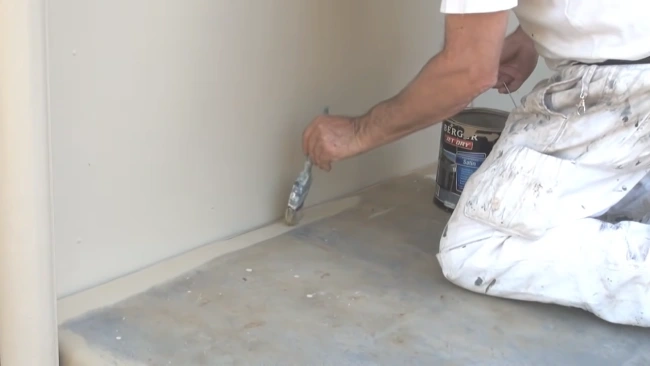
want to know how to keep your painted concrete surfaces looking awesome? Check out these simple steps to seal them up tight.
Step 1: Clean Your Painted Concrete
Before sealing your painted concrete, ensure that the surface is clean and free of debris or stains.
This may involve power washing or scrubbing with a specialized cleaner depending on the condition of your surface. Once cleaned, allow ample time for the concrete to dry completely before applying any sealant.
Consider weather conditions and foot traffic when choosing a sealer for painted concrete. As we already discussed, there are many types of sealers available, including acrylics, epoxies, urethanes, and more. Therefore, you should choose one that meets your requirements.
Step 2: Apply the Sealer and Dry
Once your painted concrete surface is clean and dry, it’s time to apply the sealer. Apply the sealer in thin coats using a roller or brush. Be sure to work in small sections and use long, even strokes to avoid lap marks or bubbles.
Allow the first coat to dry according to the manufacturer’s instructions. This usually takes several hours.
If necessary, apply a second coat. Some sealers require multiple coats to achieve the desired level of protection. Once you’ve applied the final coat, let the sealer dry completely before allowing foot traffic or placing any objects on the surface.
Common Mistakes to Avoid When Sealing Painted Concrete
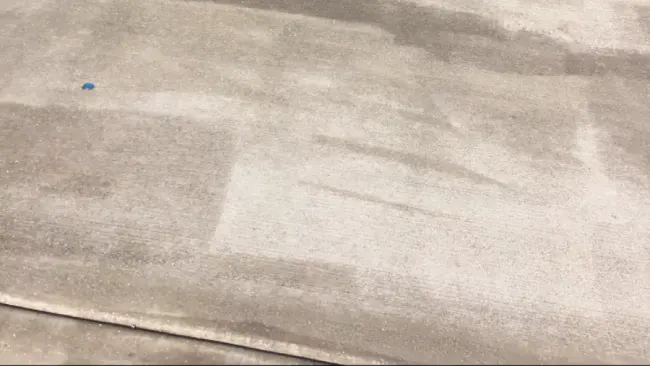
There are a few things you need to avoid when sealing painted concrete. Check out these common slip-ups:
Inadequate Surface Cleaning
Inadequate surface cleaning is one of the most common mistakes that should be avoided when sealing painted concrete. Surface contaminants such as dirt, grime, oil, and grease can weaken the bond between the sealer and the concrete slab.
This can cause premature peeling or flaking of the sealant. It’s important to ensure that the surface is thoroughly cleaned before applying any type of sealer.
Unsuitable Sealer Selection
Another common mistake when sealing painted concrete is choosing an unsuitable sealer for the surface. The wrong type or grade of sealant can lead to poor adhesion, premature peeling or flaking, discoloration, and even structural damage.
When selecting a sealer for your painted concrete surface, it’s important to consider several factors, such as the type of paint used, the level of exposure to moisture and weather elements, and the intended purpose of the sealed area.
If you’re sealing a garage floor with high traffic volume and frequent tire contact, you’ll need a heavy-duty epoxy-based sealer with excellent resistance to abrasion and chemical spills.
Another mistake related to sealer selection is using too much or too little product on the surface. Excess amounts of sealant can cause bubbling or cracking, while under-application may result in inadequate coverage and protection.
Poor Application Technique
Poor application technique is another mistake that is often made when sealing painted concrete. Even with the correct sealer, it won’t provide adequate protection for your surface if it’s not applied correctly.
Applying too thick or uneven sealant can cause bubbles and an unsatisfactory finish, and under-application can leave gaps and weak spots prone to damage.
To avoid these issues, it’s essential to closely follow manufacturer guidelines regarding application rates and drying times. This means using the right tools, such as brushes, rollers, or sprayers, depending on the type of sealer used.
Additionally, cleaning and preparing the surface before applying any sealant is crucial for optimal adhesion and performance.
Another factor to consider is environmental conditions during application. Temperature and humidity levels can affect how well a sealer adheres to the surface and dries. Therefore, always check weather forecasts before starting your project and plan accordingly.
How can you find a quality epoxy concrete sealer for painted concrete?
Sifting through the many options for a high-quality epoxy concrete sealer can be overwhelming. To make it easier, we’ve already researched and compiled a list of the top-quality sealers available on the market.
Trusting our reviews will allow you to confidently choose the best epoxy concrete sealer without any unnecessary hassle. Experience a convenient and reliable way to find the perfect solution by checking out our expert-reviewed recommendations.
How often do you need to reseal your painted concrete?
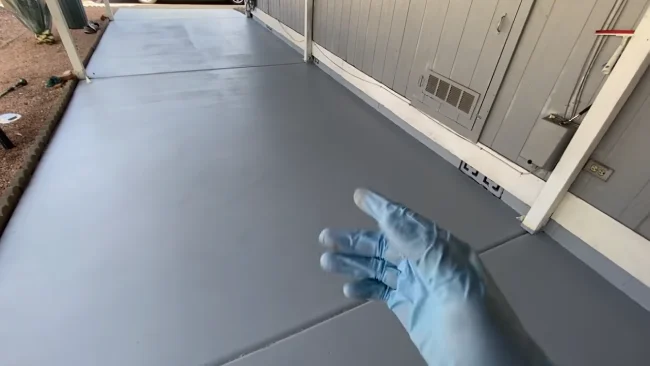
The frequency with which you need to reseal painted concrete will depend on several factors, including the type of sealer used, the level of foot traffic or other use the concrete surface receives, and the climate in which it is located.
In general, resealing painted concrete every two to three years is a good idea to maintain its appearance and protect it from damage.
You may need to reseal concrete more often if it’s exposed to heavy foot traffic or harsh weather conditions, such as extreme temperatures, high humidity, or frequent rain or snow.
Does sealing painted concrete make it waterproof?
Sealing painted concrete can make it more water-resistant but may not necessarily make it completely waterproof. By adding a layer of protection to painted concrete, sealers can help prevent water damage and moisture buildup.
But, the effectiveness of the sealer will vary based on its type and application quality. Some sealers offer only minimal protection, while others can effectively waterproof concrete.
Boost Your Concrete’s Performance with Sealing Painted Concrete
Protect your painted concrete surfaces from damage caused by exposure to external elements like water, oils, dirt, and UV rays through the simple and effective solution of sealing.
With various sealers available in the market, selecting the right one for your conditions is important. By applying the sealer in thin coats via roller or brush and allowing it to dry thoroughly before use, your surface will be better protected.
Sealing not only enhances the appearance of your painted concrete surfaces but also prolongs their lifespan, making it a vital component of modern construction.
